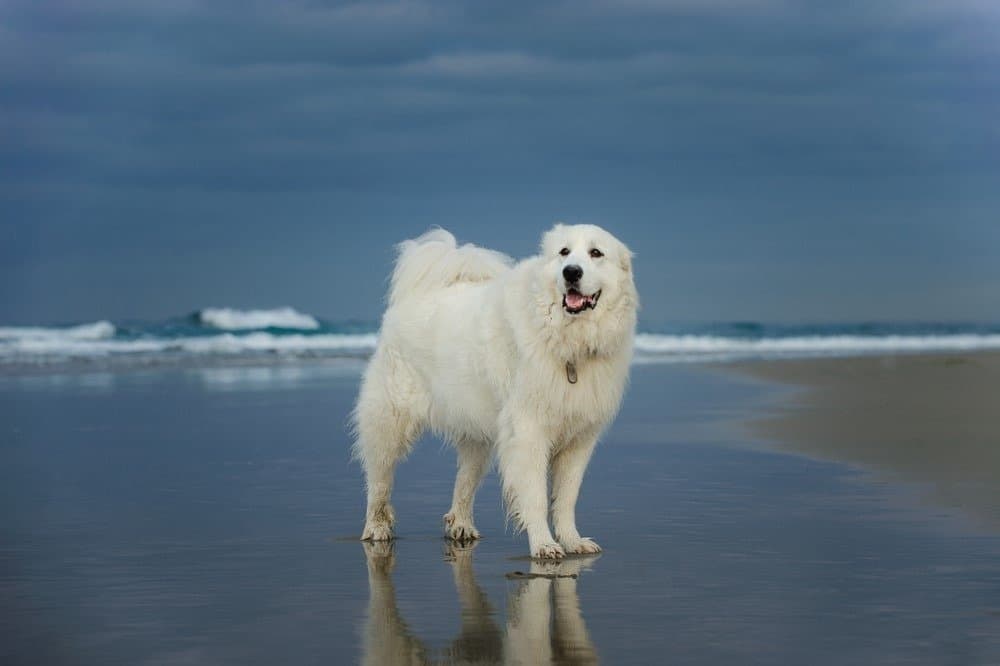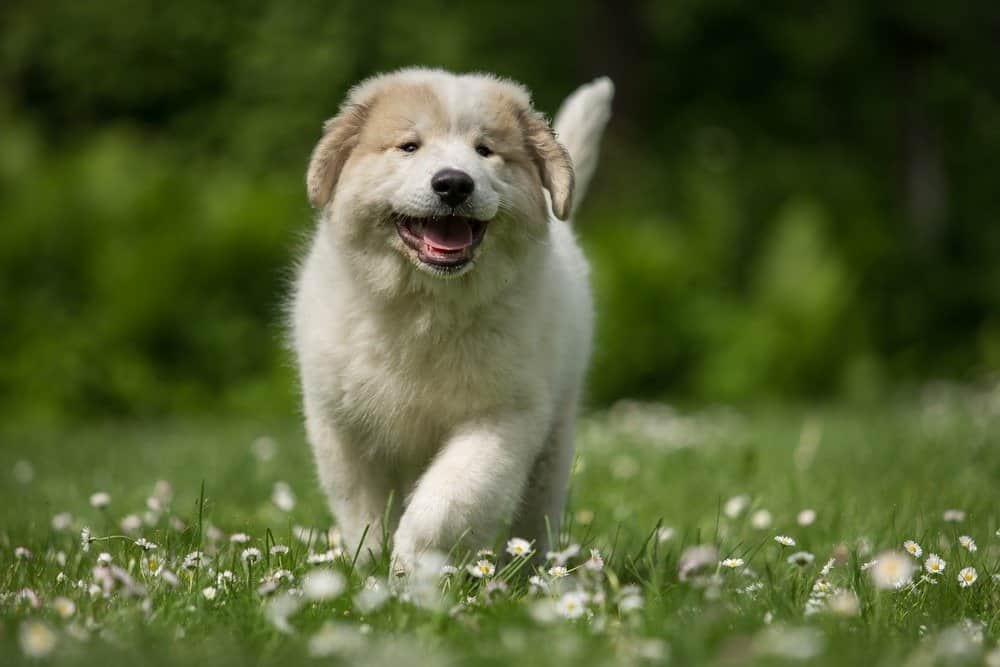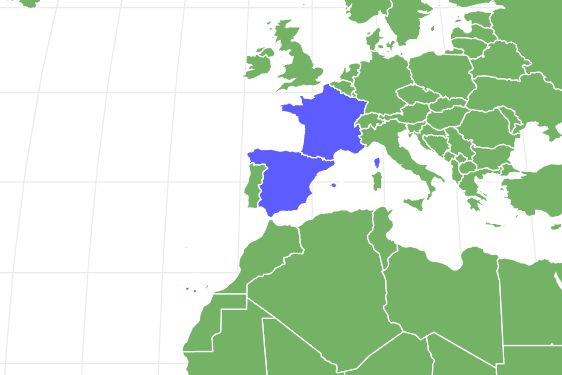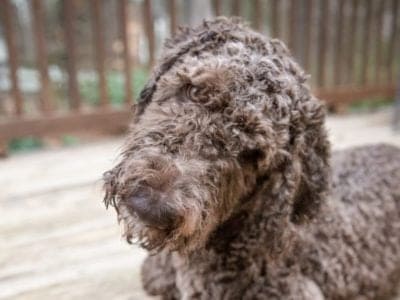Great Pyrenees
.jumbotron {
background-image: url(“https://a-z-animals.com/media/Great-Pyrenees-5-e1653860446464-400×300.jpg”);
}
}
@media only screen and (min-width: 641px) and (max-width: 920px) {
.jumbotron {
background-image: url(“https://a-z-animals.com/media/Great-Pyrenees-5-e1653860446464-470×370.jpg”);
}
}
@media only screen and (min-width: 921px) {
.jumbotron {
background-image: url(“https://a-z-animals.com/media/Great-Pyrenees-5-e1653860446464.jpg”);
}
}
Great Pyrenees
Canis lupus
Great Pyrenees Scientific Classification
- Kingdom
- Animalia
- Phylum
- Chordata
- Class
- Mammalia
- Order
- Carnivora
- Family
- Canidae
- Genus
- Canis
- Scientific Name
- Canis lupus
Read our Complete Guide to Classification of Animals.
Great Pyrenees Conservation Status
Great Pyrenees Facts
- Common Name
- Great Pyrenees
.checked {
color: yellow;
}
Great Pyrenees as a Pet:
- General Health
- Energy Level
- Shedability
- Trainability
- Intelligence
- Tendency to Chew
- Size
- Family and kid friendliness
- Yappiness / Barking
- High
- Separation Anxiety
- Moderate
- Preferred Temperature
- Cold climate
- Exercise Needs
- High
- Friendly With Other Dogs
- High
- Pure bred cost to own
- $600 to $5,000
- Dog group
- Herding
- Male weight
- 100-120+ lbs
- Female weight
- 85- lbs
This post may contain affiliate links to our partners like Chewy, Amazon, and others. Purchasing through these helps us further the A-Z Animals mission to educate about the world’s species..

Spiders that fly! Fish that walk! And 1000+ more incredible animals. Discover them all for FREE
.photo-gallery {
–margin: 0px auto 0px;
–padding: 0px 0px 0px 0px;
}
.gallery-link {
background-image: url(“https://a-z-animals.com/media/Great-Pyrenees-5-e1653860446464.jpg”);
background-repeat: no-repeat;
background-size: cover;
background-position: center;
height: 500px;
justify-content: center;
text-align: center;
align-items: center;
display: flex;
border: 2px solid #000;
}
.gallery-link img {
height: 50%;
}
@media only screen and (max-width: 768px) {
.gallery-link {
height: 300px !important;
}
}
View all of the Great Pyrenees images!
Great Pyrenees have been around for centuries.
They are likely descents of guardian dogs that were in Asia Minor around 10,000 b.c. Around the year 3,000 b.c, nomadic shepherds went to the Pyrenees mountains and brought their guarding dogs with them. This was likely the beginning of the Great Pyrenees breed.
Great Pyrenees are very large white dogs. Since they were bred to watch over flocks of sheep, they can be quite protective of their family members. When strangers aren’t around, these dogs can be very affectionate and playful with the people they love. They have a calm and patient temperament and can make a great family dog. Because of their large size, it is important to make sure these dogs have plenty of space to run and play.
See all of our expert product reviews.
Owning a Great Pyrenees: 3 Pros and Cons
| Pros! | Cons! |
|---|---|
| Great family dog: The Great Pyrenees makes an excellent family dog. They are affectionate and friendly with the people they love. They can also be very gentle and patient with children. | Barks a lot: Great Pyrenees can be very territorial and will bark quite loudly at strangers. |
| Only needs moderate exercise: A Great Pyrenees’ exercise requirements are quite manageable for most people. They will do fine with daily walks and some playtime in a fenced-in yard. | Destructive: Puppies will chew on anything they can find. This breed can also be destructive if they are left home alone out of their crate. |
| Devoted: Great Pyrenees are very devoted and loyal to their family members. | Heavy shedders: Great Pyrenees have thick and long hair, and they shed quite often. Be prepared to have dog hair all over your home. |

everydoghasastory/Shutterstock.com
button.pulse {
transform: scale(1); animation: pulse 2s infinite;
box-shadow: 0 0 0 0 rgba(11, 247, 25, 1);
}
@keyframes pulse {
0% { transform: scale(0.90); box-shadow: 0 0 0 0 rgba(11, 247, 25, 0.5); }
60% { transform: scale(1); box-shadow: 0 0 0 15px rgba(11, 247, 25, 0); }
100% { transform: scale(0.90); box-shadow: 0 0 0 0 rgba(11, 247, 25, 0); }
}
Great Pyrenees Size and Weight
This is a large breed dog. Males are a little larger than females in this breed. Great Pyrenees are typically between 27 and 32 inches tall and weigh between 100 and 120 pounds or more. Females generally stand between 25 and 29 inches tall and weigh between 85 and 100 pounds or more. Three-month old puppies weigh between 29 and 40 pounds. When they are six months old, puppies will typically weigh between 54 and 74 pounds. These dogs will be fully grown when they are 19 months old.
| Male | Female | |
|---|---|---|
| Height | 27 inches to 32 inches | 25 inches to 29 inches |
| Weight | 100 pounds to 120+ pounds | 85 pounds to 100+ pounds |
Great Pyrenees Common Health Issues
Before you bring home one of these dogs, there are a few common health issues that impact this breed you should be aware of. While not all of them will experience these issues, knowing about them can help you prepare to provide the best level of care for your dog.
As a large dog breed, Great Pyrenees can suffer from Gastric Torsion, more commonly known as bloat. The stomach of a dog suffering from bloat becomes distended and then twists. This prevents the dog from being able to get rid of the excess air in their stomach by burping or vomiting. Bloat can be life-threatening, and you should rush your dog to the vet right away if they exhibit any signs of it. Feeding smaller meals throughout the day and limiting your dog’s exercise after eating can help prevent bloat.
Another potential health issues for these dogs is hip dysplasia. This is a genetic condition where a dog’s thighbone doesn’t fit properly into the joint at the hip. It causes the two bones to rub against one another which can be quite painful and can cause a dog to limp. Since this is an inherited condition, you should check on the health history of the parents before buying a Great Pyrenees from a breeder.
Health and Entertainment for your Great Pyrenees
See all of our expert product reviews.
These dogs can also suffer from Addison’s Disease. Also called hypoadrenocorticism, this condition occurs when a dog’s adrenal gland isn’t able to make enough adrenal hormones. Adrenal hormones control the level of potassium and salt in the body. Sign of this condition may include loss of appetite, vomiting, lethargy, or, in some cases, heart arrhythmia. Vets can treat Addison’s disease with corticosteroids or fludrocortisone acetate.
To recap, here are some of the more common health concerns that could impact these dogs:
Bloat (Gastric Torsion)
Hip dysplasia
Hypoadrenocorticism (Addison’s Disease)
Great Pyrenees Temperament and Behavior
Great Pyrenees have a very affectionate and patient personality. They are also very calm and intelligent. These traits make the Great Pyrenees a great family dog. They can exhibit playful behaviors, making them a good companion for a child. These dogs will do best with young children when they are socialized from an early age and have opportunities to interact with children.
Because they were bred to be mountain dogs to watch over sheep, Great Pyrenees do bark quite a bit. They will bark loudly to alert their owners if a stranger is nearby. Great Pyrenees can also be destructive if left alone; it is important to crate train your dog.
How to Take Care of a Great Pyrenees
As you prepare to take care of your Great Pyrenees, there are a few things you will want to keep in mind. These dogs have unique health concerns, training needs, nutritional needs, temperament, and more which will make caring for this dog breed different from caring for other breeds.
The Best Dog Food for Great Pyrenees
When choosing food for your dog, always select high-quality options from trusted manufacturers. Since Great Pyrenees are susceptible for bloat, you will want to avoid feeding them a large meal and then having them exercise a lot. Rather, choose to feed your dog multiple smaller meals each day and give your dog some time to digest before giving them exercise. This will help reduce the chance of them suffering from bloat.
Compared to other large breeds of dogs, this breed typically eats less food. However, they need to get enough omega-3 and omega-6, so be sure to look for foods that are high in these healthy fats.
Puppies have a smaller stomach than their adult counterparts. It will be important to feed them even more frequently throughout the day. Each meal should be relatively small. As the puppies get older, you can slowly reduce the number of times you feed them and increase the amount of food they receive with each meal.
With all their dietary needs in mind, the A-Z Animals choice for the best dog food for Great Pyrenees is Purina Pro Plan Sport, Energy & Vitality Support, High Protein 30/20 Salmon Dry Dog Food.
With salmon as the main ingredient, this food is enriched with tons of omega-3 and omega-6 fatty acids for the joints, skin, and coat. The probiotics ease digestion while natural glucosamine and EPA offer even more protection for the joints to help avoid hip dysplasia.
Try out Purina Pro Plan High Protein Salmon Dog Food, available on amazon.
- One (1) 33 lb. Bag – Purina Pro Plan High Energy, High Protein Dog Food, SPORT 30/20 Salmon & Rice Formula
- Concentrated nutrition optimizes oxygen metabolism (VO2 MAX) for increased endurance. High protein formula, with real salmon as the first ingredient
- Fortified with guaranteed live probiotics to support digestive and immune health. Used to be known as SPORT Performance 30/20 Salmon and Rice Formula
- Amino acids nourish muscles, including the crucial time after exercise. 30 percent protein and 20 percent fat fuels metabolic needs and maintains lean muscle
- Glucosamine and EPA, an omega-3 fatty acid, for joint health and mobility. Omega-6 fatty acids and vitamin A to nourish skin and coat
Great Pyrenees Maintenance and Grooming
Great Pyrenees have long and thick white fur. They will shed a lot of fur from their undercoat during the spring. Brushing your dog with a slicker brush or a pin brush once a week, or even more frequently, can help limit the amount of hair that they’ll shed.
In addition to regular brushing, it will also be important to brush your dog’s teeth a few times a week to reduce the build up to plaque and tartar. Trim the nails regularly to keep them from getting too long. If their nails become too long, it can become painful for them to walk.
Great Pyrenees Training
Great Pyrenees can be a little challenging to train. They were bred to be very independent and don’t always immediately follow commands. Great Pyrenees will do best with experienced dog owners who know how to train a dog. You can also consider signing your dog up for an obedience training class.
Positive reinforcement training methods work best for Great Pyrenees. If Great Pyrenees don’t get proper training, they can become uncontrollable. A 100+ pound dog that does not know how to behave can be a real problem.
Great Pyrenees Exercise
A Great Pyrenees is not an overly active dog, but they will still need moderate exercise. They were bred to be mountain dogs to protect livestock. While they will patrol the area they are protecting, they do not exert a great deal of energy, unless there is a threat they need to fend off. Daily walks to time to run around in a fenced-in backyard can meet the exercise requirements for this breed. Great Pyrenees also do well participating in obedience trials or cart-pulling activities.
Great Pyrenees Puppies
If you are thinking of bringing a Great Pyrenees puppy home, you should first confirm that your home and lifestyle will be conducive with this dog breed’s needs. Great Pyrenees will grow to be very large dogs, so they will need a large space where they’ll be able to run around. They do well in farms, ranches, or homes with a large fenced-in yard.
Shortly after bringing your puppy home, you should begin to crate train him or her. Crate training can help Great Pyrenees find a quiet place to rest and will also help with your potty-training efforts. Great Pyrenees can be destructive if left to roam around alone, so you’ll want to get them used to going in their crate.

DTeibe Photography/Shutterstock.com
Great Pyrenees And Children
Great Pyrenees are an excellent dog breed for a family with young children. These dogs are affectionate, patient, and playful. Especially when they are exposed to children from a young age, a Great Pyrenees can make an excellent companion and playmate for a child.
As with other dog breeds, it is always important to closely supervise children when they are around a Great Pyrenees. This will avoid accidental injury. Toddlers and babies should be very closely supervised due to the large size of a Great Pyrenees.
Great Pyrenees may act like a guardian for a child. They can become quite protective. You will want to make sure your dog is properly trained and socialized to prevent them from acting too aggressively toward strangers.
Wile your puppy may be quite small depending on how early you adopt him, be ready for him to grow quickly. Adult dogs can reach 120 pounds. Your puppy will also need plenty of exercise, so be sure to take him for walks, play with him, or let him out in a fenced-in yard to play.
Dogs similar to Great Pyrenees
Three dog breeds that are similar to these dogs are Samoyeds, Irish Wolfhounds, and Bernese Mountain Dogs.
- Samoyed: Samoyeds have a dense white coat like Great Pyrenees. Both dogs also shed quite a lot. They are also both known to be very territorial. Samoyeds were bred to be sled dogs, while Great Pyrenees were bred to be herding dogs. Samoyeds are also significantly smaller than a Great Pyrenees. The average weight of a male Samoyed is about 55 pounds, while male Great Pyrenees weigh 100 pounds or more.
- Irish Wolfhound: Irish Wolfhounds and Great Pyrenees are both very large dogs. While an Irish wolfhound is larger than a Great Pyrenees, both weigh over 100 pounds. A big difference between these two breeds is that Great Pyrenees have a much higher tendency to bark than Irish Wolfhounds.
- Bernese Mountain Dog: Bernese Mountain Dogs are another very large dog breed. They can be nearly as large as a Great Pyrenees with an average weight of just under 100 pounds. Great Pyrenees are all white, while Bernese Mountain Dogs are black, white, and rust-colored. Both dogs are territorial and can make a great watchdog.
Famous Great Pyrenees
Over the years, there have been some famous Great Pyrenees. Here are a few:
- Muffin was Elvis Presley’s Great Pyrenees.
- A Great Pyrenees dog was in the movie Santa Buddies from the Air Buddies series.
- Great Pyrenees was featured in the TV show Belle et Sébastien from the 1960s.
Popular Names for Great Pyrenees
Below are a few popular names for Great Pyrenees if you’re looking for the perfect name for your new companion.
- Charlie
- Samson
- Trapper
- Oliver
- Marley
- Belle
- Sandy
- Sable
- Lola
- Chloe
Last update on 2022-07-06 / Affiliate links / Images from Amazon Product Advertising API
View all 115 animals that start with G
Great Pyrenees FAQs (Frequently Asked Questions)
How much does Great Pyrenees cost to own?
Buying a Great Pyrenees from a shelter costs about $600 on average. However, the price could range from $1,400 to $5,000 for a show-quality dog. If you adopt a Great Pyrenees from a shelter or rescue organization, it will likely cost a few hundred dollars to cover vaccinations and the adoption fee.
In addition to the price you will pay to adopt a Great Pyrenees, you will also want to be prepared for all the additional costs of dog ownership. Your Great Pyrenees will need medical care, training, food, toys, a collar and leash, a crate, dog beds, and many other supplies. Your first year owning the dog will likely be the most expensive since you will need to purchase all of the supplies your dog will need. You should expect to spend at least $1,000 that first year, but it could possibly be more. Each year after that, you should budget between $500 and $1,000 to cover veterinarian expenses, food, and anything else that your dog may need.
How long do Great Pyrenees live?
The life expectancy for a Great Pyrenees is between 10 and 12 years.
When do Great Pyrenees stop growing?
Great Pyrenees will finish growing when they are about 19 months old.
How big do Great Pyrenees get?
Great Pyrenees are a large dog breed. Males weigh between 100 and120 pounds or more and are between 27 and 32 inches tall. Females weigh between 85 and 100 pounds or more and are between 25 and 29 inches tall.
Do Great Pyrenees shed a lot?
Yes, Great Pyrenees are heavy shedders. They have long and thick white hair that will be left around your home. Regular brushing can reduce the amount they shed, but some hair will still fall out on its own.
Is a Great Pyrenees a good family dog?
Yes, a Great Pyrenees can make a great family dog. Great Pyrenees know how to be gentle and patient with children. They also can be loving and will have fun playing with a child. However, Great Pyrenees do bark quite a bit, so it could interrupt nap time for younger children. Great Pyrenees were bred to watch over sheep and other livestock, so they will often act as a guardian towards your children. Make sure they receive early training and socialization to prevent them from getting too aggressive.
Will Great Pyrenees bite?
While Great Pyrenees can be protective of their family which can make them aggressive, they will rarely bite someone. However, you will want to make sure your Great Pyrenees is properly trained and socialized from an early age to reduce their aggression and decrease the chances that they will bite or hurt someone.
Are Great Pyrenees herbivores, carnivores, or omnivores?
Great Pyrenees are Omnivores, meaning they eat both plants and other animals.
What Kingdom do Great Pyrenees belong to?
Great Pyrenees belong to the Kingdom Animalia.
What phylum do Great Pyrenees belong to?
Great Pyrenees belong to the phylum Chordata.
What class do Great Pyrenees belong to?
Great Pyrenees belong to the class Mammalia.
What family do Great Pyrenees belong to?
Great Pyrenees belong to the family Canidae.
What order to Great Pyrenees belong to?
Great Pyrenees belong to order Carnivora.
What type of covering do Great Pyrenees have?
Great Pyrenees are covered in Hair.
What is the scientific name for the Great Pyrenees?
The scientific name for the Great Pyrenees is Canis lupus.
What is the difference between a Kuvasz and a Great Pyrenees?
At a glance, it can be hard to see any differences between these two large, loyal breeds. Both are livestock dogs with thick, light-colored coats with similarly protective personalities. However, even their similarities aren’t identical. The Kuvasz can come in a variety of shades of white, and it has more definitely textured fur than the Great Pyrenees.
What is the difference between the Maremma Sheepdog and the Great Pyrenees?
Overall, the Great Pyrenees and Maremma Sheepdog are fairly similar. After all, both have thick white coats and are used as farm dogs to help protect livestock. However, the Great Pyrenees is around 8 percent taller and tends to be more strong-willed and independent, whereas the Maremma Sheepdog is eager to please. This also means that the sheepdog is easier to train, as they won’t be as likely to test boundaries. The Maremma Sheepdog also lives considerably longer, with a life expectancy of over 13 years.
What is the difference between the Great Pyrenees and the Golden Retriever?
There are many differences between the Great Pyrenees and the Golden Retriever. First, aside from sharing a double coat, they have entirely different coats. The Golden Retriever has a cool or warm golden coat with a thin topcoat. The Great Pyrenees has a thick, fluffy white coat that may have different color markings. They’re also double the size of even the largest Golden Retrievers. Their personalities are different too, with the Golden Retriever being more playful and aloof than the serious guard dog that is the Great Pyrenees.
What is the difference between the Great Pyrenees and Samoyed?
The key differences between the Great Pyrenees and Samoyed are their size, appearance, coat colors, lifespan, trainability, grooming needs, drooling level, energy level, and noisiness.
What are the key differences between Pyrenean Mastiffs and Great Pyrenees?
The key differences between Pyrenean Mastiffs and Great Pyrenees are size, coat, lifespan, tolerance to children, energy level, grooming needs, drooling, and barking level.
What’s the difference between the Great Pyrenees and the Newfoundland?
The key differences between Great Pyrenees dogs and Newfoundlands include size, appearance, lifespan, drooling level, and barking level.
What’s the difference between an Anatolian Shepherd and a Great Pyrenees?
The key difference between the Anatolian Shepherd and Great Pyrenees is their appearance, including coat length, color, and size.
Other differences include lifespan, temperament, trainability, and drooling level.
What are the key differences between Bernese Mountain Dogs and Great Pyrenees?
The main difference between a Bernese Mountain Dog and the Great Pyrenees is fur color. Other differences include size, lifespan, temperament, energy level, trainability, grooming needs, and shedding level.
What are the key differences between Akbash and Great Pyrenees?
The key differences between Akbash and Great Pyrenees are size, appearance, origin, and AKC recognition.
Sources
- American Kennel Club, Available here: https://www.akc.org/dog-breeds/great-pyrenees/
- Petfinder, Available here: https://www.petfinder.com/dog-breeds/great-pyrenees/
- Dog Breed Info, Available here: https://www.dogbreedinfo.com/greatpyrenees.htm
- Love To Know, Available here: https://dogs.lovetoknow.com/wiki/Great_Pyrenees_Puppies

























